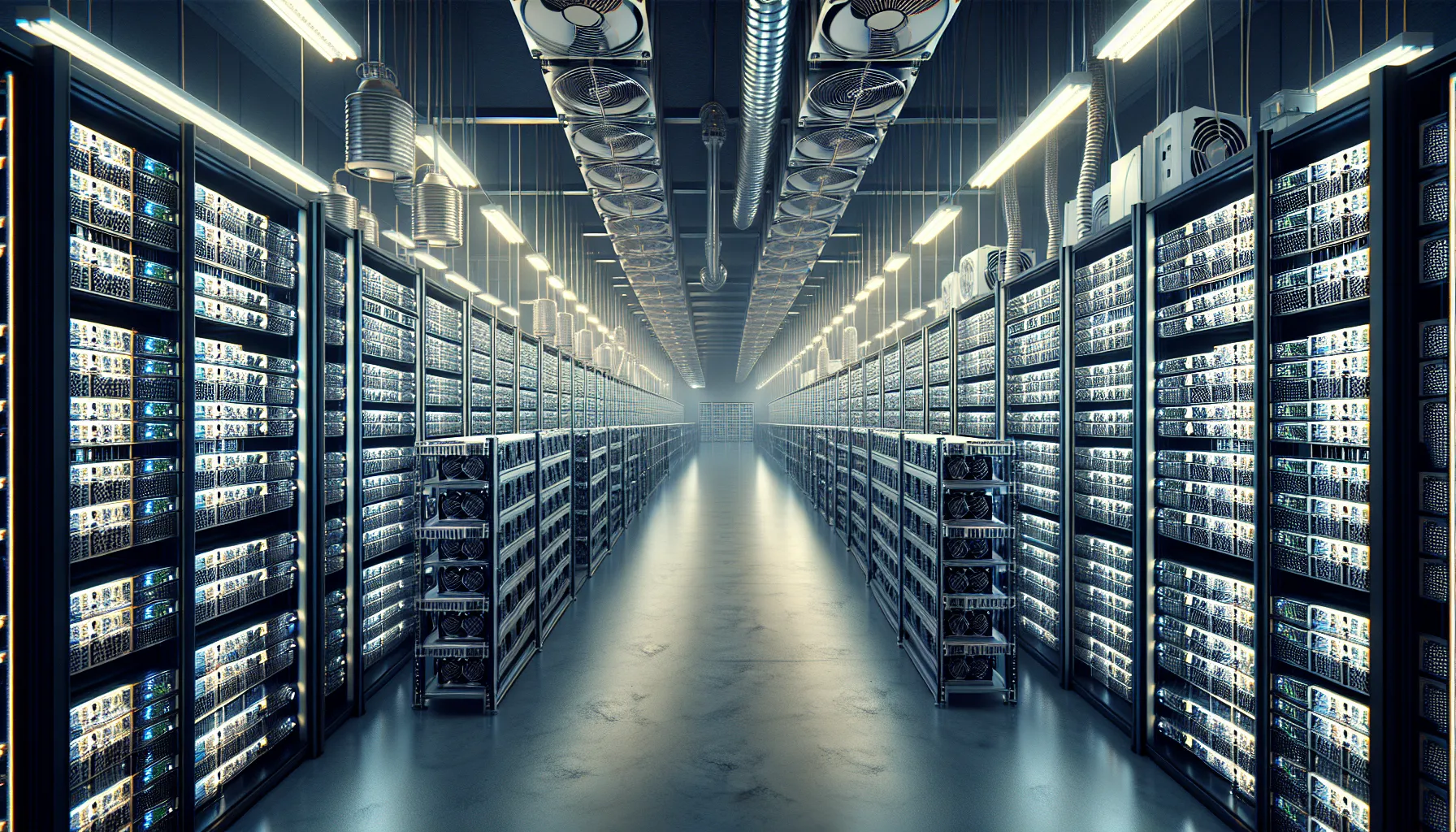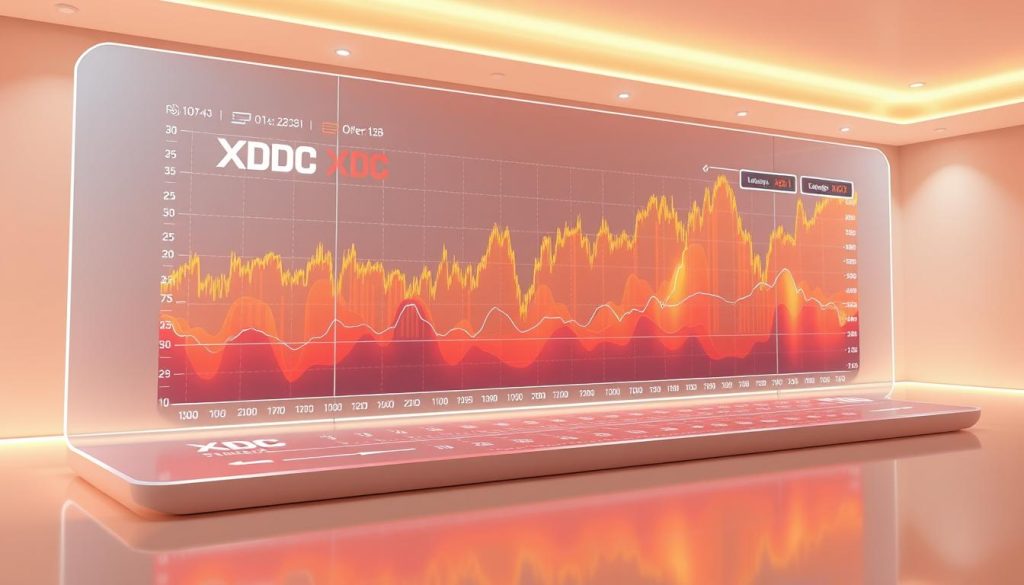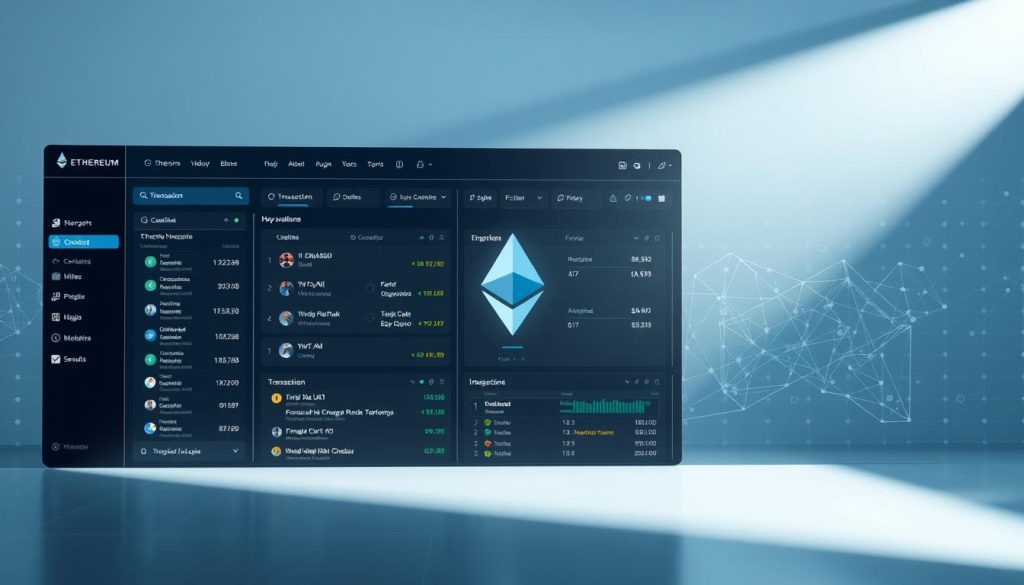Key Takeaways
- Bitcoin mining centers are industrial-scale facilities that house thousands of specialized ASIC computers working 24/7 to validate transactions and secure the Bitcoin network, consuming between 1-200 megawatts of electricity depending on their size.
- Strategic location selection is crucial for profitability, with successful mining centers targeting regions offering electricity rates below $0.04 per kilowatt-hour, stable power grids, favorable climates for cooling, and crypto-friendly regulatory environments.
- Infrastructure requirements are complex and costly, including specialized cooling systems, robust power distribution networks, high-speed internet connectivity, and comprehensive security measures to protect millions of dollars in mining equipment.
- Environmental impact is significant but improving, with modern facilities increasingly adopting renewable energy sources like solar, wind, and hydroelectric power to reduce carbon footprints and achieve operational sustainability.
- Economic benefits extend beyond mining operations, creating local employment opportunities, driving infrastructure development, and contributing to energy grid stability through demand response programs and renewable energy partnerships.
- The future points toward greater efficiency and institutionalization, with next-generation ASIC technology, AI-powered operations, immersion cooling systems, and large-scale corporate adoption reshaping the mining landscape toward more sophisticated and sustainable operations.
You’ve likely heard about Bitcoin mining but might not fully understand what happens inside those massive facilities that power the cryptocurrency network. Bitcoin mining centers are specialized data centers filled with powerful computers working around the clock to solve complex mathematical problems and validate transactions on the blockchain.
These industrial-scale operations require enormous amounts of electricity and sophisticated cooling systems to keep thousands of mining machines running efficiently. From converted warehouses in rural areas to purpose-built facilities near renewable energy sources, mining centers have become the backbone of Bitcoin’s decentralized network.
Understanding how these facilities operate gives you insight into the technical infrastructure that makes Bitcoin possible. Whether you’re considering investing in mining operations or simply curious about the technology behind digital currency, exploring the world of Bitcoin mining centers reveals the impressive scale and complexity of modern cryptocurrency production.
What Is a Bitcoin Mining Center?
A bitcoin mining center is a specialized facility that houses hundreds or thousands of ASIC (Application-Specific Integrated Circuit) miners working continuously to validate Bitcoin transactions and secure the network. These facilities operate as industrial-scale bitcoin server farms designed specifically for cryptocurrency mining operations.
Bitcoin mining centers contain rows of specialized computers that perform complex mathematical calculations called proof-of-work algorithms. Each machine competes to solve cryptographic puzzles that validate new transactions and add them to the Bitcoin blockchain. The first miner to solve the puzzle receives newly minted bitcoins and transaction fees as rewards.
Key Components of Mining Centers
Your typical bitcoin mining warehouse includes several critical infrastructure elements:
- ASIC Mining Rigs: Specialized computers designed exclusively for Bitcoin mining
- Power Distribution Systems: High-capacity electrical infrastructure to supply constant energy
- Cooling Systems: Industrial fans and air conditioning to prevent overheating
- Network Equipment: High-speed internet connections and redundant networking hardware
- Security Systems: Physical and digital security measures to protect valuable equipment
Scale and Operations
Modern bitcoin mining centers range from small facilities with 100 machines to massive operations housing over 100,000 miners. These facilities consume between 1-200 megawatts of electricity depending on their size. Large-scale operations often locate near renewable energy sources like hydroelectric dams or solar farms to reduce operational costs.
The mining process runs 24/7 throughout the year with minimal downtime. Facility operators monitor performance metrics including hash rate, temperature, and power consumption to maximize efficiency. Most centers maintain backup power systems and redundant internet connections to ensure continuous operation during outages.
Key Components of a Bitcoin Mining Center

A bitcoin mining center operates through three critical infrastructure components that determine its efficiency and profitability. Each bitcoin mining warehouse requires specialized equipment and systems designed to handle the intensive computational demands of cryptocurrency mining.
Mining Hardware and Equipment
ASIC miners form the backbone of every bitcoin server farm. These specialized computers perform SHA-256 hash calculations at rates exceeding 100 terahashes per second per unit. Modern mining centers deploy thousands of these machines across multiple rows of server racks.
Popular ASIC models include the Antminer S19 Pro (110 TH/s) and the WhatsMiner M30S+ (100 TH/s). Each machine weighs approximately 15 pounds and consumes between 3,000-3,500 watts of electricity. Mining operators organize these units in standardized 19-inch server racks containing 6-8 miners per rack.
Your mining hardware requires constant network connectivity through ethernet cables connected to managed switches. These switches handle data transmission between miners and mining pool servers. Most bitcoin mining centers maintain backup internet connections to prevent downtime during network outages.
Cooling and Ventilation Systems
Heat management systems prevent mining equipment from overheating and maintain optimal operating temperatures. ASIC miners generate significant heat during operation, with each unit producing approximately 11,000-12,000 BTUs per hour.
Industrial exhaust fans create negative pressure ventilation systems that draw hot air away from mining equipment. These systems typically include:
- High-volume exhaust fans (36-48 inches in diameter)
- Intake louvers with air filtration systems
- Ductwork for directed airflow management
- Temperature monitoring sensors throughout the facility
Immersion cooling represents an advanced cooling method where miners operate submerged in dielectric fluid. This technique reduces energy consumption by 10-20% compared to traditional air cooling while extending hardware lifespan.
Power Infrastructure
Electrical systems deliver consistent power to thousands of mining machines operating simultaneously. A typical bitcoin mining center requires 1-200 megawatts of electrical capacity depending on scale and equipment density.
Power distribution units (PDUs) convert high-voltage electricity from the grid into usable 220V or 240V power for mining equipment. These systems include:
- Main electrical transformers (ranging from 1-50 MVA capacity)
- Switchgear and circuit breakers for safety protection
- Backup generators for emergency power supply
- Uninterruptible power supplies (UPS) for critical systems
Your facility’s power infrastructure must maintain 99.5% uptime to maximize mining profitability. Most large-scale operations secure power purchase agreements with utility companies to guarantee consistent electricity supply at competitive rates.
Location Factors for Bitcoin Mining Centers
Bitcoin mining centers require strategic location planning to optimize operational efficiency and profitability. Your facility’s geographic placement directly impacts electricity costs, cooling requirements, and regulatory compliance.
Energy Costs and Availability
Electricity costs represent 60-80% of your bitcoin mining center’s operational expenses. You’ll find the most profitable locations in regions with electricity rates below $0.04 per kilowatt-hour, such as:
- Texas: $0.02-0.05/kWh with deregulated energy markets
- Washington State: $0.03-0.06/kWh from hydroelectric power
- Wyoming: $0.04-0.07/kWh with coal and wind resources
- Kazakhstan: $0.02-0.04/kWh from abundant fossil fuels
Your bitcoin server farm requires consistent power delivery with 99.9% uptime guarantees. Industrial-scale facilities consuming 10-200 megawatts must secure power purchase agreements (PPAs) directly with utility companies or renewable energy providers. Grid stability becomes critical when your mining warehouse operates thousands of ASIC miners simultaneously.
Renewable energy sources offer long-term cost predictability for your bitcoin mining center. Solar installations provide electricity at $0.025-0.035/kWh over 20-year contracts, while wind power delivers rates of $0.02-0.04/kWh. Hydroelectric facilities in regions like Quebec and Norway consistently offer sub-$0.03/kWh rates year-round.
Climate Considerations
Ambient temperature directly affects your cooling costs and equipment longevity. Optimal locations maintain average temperatures between 50-70°F (10-21°C) throughout the year, reducing your HVAC energy consumption by 15-30%.
Cold climates provide natural cooling advantages for your bitcoin mining warehouse:
- Iceland: Average temperatures of 32-57°F (0-14°C) reduce cooling costs by 40%
- Northern Canada: Sub-zero winters enable free-air cooling for 6-8 months
- Siberia: Extreme cold allows year-round ambient cooling systems
Humidity levels between 45-55% prevent condensation damage while maintaining optimal operating conditions. Your facility’s location altitude affects air density and cooling efficiency, with higher elevations requiring adjustments to fan speeds and airflow calculations.
Extreme weather events pose operational risks to your bitcoin server farm. Locations with minimal hurricane, tornado, or earthquake activity ensure continuous operation. Facilities in tornado-prone areas like Texas and Oklahoma implement reinforced structures and backup power systems.
Regulatory Environment
Cryptocurrency regulations vary significantly across jurisdictions, affecting your mining center’s legal operations and tax obligations. Countries with clear regulatory frameworks provide operational certainty for long-term investments.
Crypto-friendly jurisdictions offer favorable conditions:
- United States: State-level regulations with federal tax clarity
- Canada: Provincial mining incentives and clear tax treatment
- Kazakhstan: Simplified licensing and competitive electricity rates
- Paraguay: Renewable energy focus and mining-friendly policies
Restricted or banned regions create operational risks:
- China: Complete mining prohibition since September 2021
- India: Unclear regulatory status with potential restrictions
- Turkey: Central bank cryptocurrency payment restrictions
Your facility must comply with local environmental regulations, particularly regarding noise levels and carbon emissions. Many jurisdictions require environmental impact assessments for facilities consuming over 5 megawatts of electricity.
Tax implications vary significantly by location. Some regions offer mining-specific incentives, while others classify mining as manufacturing or data processing activities. Your bitcoin mining center benefits from jurisdictions with corporate tax rates below 25% and depreciation schedules favoring technology equipment.
Economic Impact of Bitcoin Mining Centers
Bitcoin mining centers generate substantial economic effects across multiple sectors, creating ripple effects that extend far beyond the cryptocurrency industry. These facilities transform local economies through direct investment, employment opportunities, and infrastructure development.
Job Creation and Local Employment
Bitcoin mining centers create diverse employment opportunities ranging from technical positions to administrative roles. You’ll find these facilities typically employ 15-50 workers per 100 megawatts of capacity, depending on the operation’s scale and automation level.
Technical positions include:
- Mining technicians responsible for hardware maintenance and troubleshooting
- Electrical engineers managing power distribution systems
- Network administrators overseeing connectivity and security
- Data center operators monitoring 24/7 operations
Administrative roles encompass:
- Site managers coordinating daily operations
- Safety coordinators ensuring compliance with regulations
- Procurement specialists managing equipment and supplies
- Financial analysts tracking profitability metrics
Large-scale bitcoin mining warehouses often partner with local educational institutions to develop specialized training programs. These partnerships create pathways for residents to enter the cryptocurrency mining industry without prior experience. For example, facilities in Texas have established apprenticeship programs that train individuals in ASIC maintenance and electrical systems management.
Infrastructure Development
Bitcoin server farms drive significant infrastructure investments that benefit entire communities. These facilities require substantial electrical grid upgrades, telecommunications improvements, and transportation network enhancements.
Electrical infrastructure improvements include:
- Substation construction to handle 50-200 megawatt loads
- Transmission line upgrades connecting mining centers to power sources
- Smart grid technology implementation for efficient power distribution
- Backup power systems ensuring operational continuity
Telecommunications infrastructure receives upgrades through:
- Fiber optic cable installation for high-speed internet connectivity
- Redundant network connections preventing downtime
- Satellite communication systems for remote locations
- Enhanced cybersecurity infrastructure protecting operations
Transportation networks benefit from:
- Road improvements accommodating heavy equipment deliveries
- Logistics hubs supporting ongoing maintenance operations
- Airport upgrades for international equipment shipments
- Rail connections for efficient coal or renewable energy transport
Energy Grid Effects
Bitcoin mining centers significantly impact local energy grids through their substantial power consumption patterns. These facilities consume between 1-200 megawatts continuously, equivalent to powering 750-150,000 homes simultaneously.
Grid stability benefits include:
- Demand response capabilities during peak usage periods
- Flexible load management reducing strain on transmission systems
- Ancillary services providing frequency regulation
- Grid balancing through rapid power consumption adjustments
Energy market effects encompass:
- Increased renewable energy development to meet mining demand
- Power purchase agreements securing long-term electricity contracts
- Grid modernization investments improving overall reliability
- Energy storage system deployment enhancing grid resilience
Bitcoin mining centers often locate near renewable energy sources, driving clean energy adoption. Wind farms in Texas and hydroelectric facilities in Washington State have expanded capacity specifically to serve mining operations. These partnerships create stable revenue streams for renewable energy developers while reducing the carbon footprint of cryptocurrency mining.
Mining facilities also participate in demand response programs, temporarily reducing power consumption during grid emergencies. This flexibility provides grid operators with valuable resources for maintaining system stability while allowing mining centers to reduce electricity costs during peak pricing periods.
Environmental Considerations
Your bitcoin mining center faces significant environmental challenges that require careful planning and strategic solutions. The electricity consumption of these facilities creates substantial environmental impacts that you must address through sustainable practices and renewable energy adoption.
Carbon Footprint and Sustainability
Your bitcoin mining warehouse generates a carbon footprint equivalent to that of entire small cities. A single bitcoin mining center consuming 100 megawatts produces approximately 400,000 tons of CO2 annually when powered by fossil fuels. This equals the emissions from 87,000 passenger vehicles operating year-round.
Energy-intensive bitcoin server farms contribute 0.5% of global electricity consumption. Each bitcoin transaction requires an estimated 700 kilowatt-hours of electricity, creating environmental concerns among regulators and environmental groups worldwide.
You can reduce your facility’s carbon impact through several strategies:
- Immersion cooling systems reduce energy consumption by 40-50% compared to traditional air cooling
- Waste heat recovery systems capture thermal energy for local heating applications
- Power management protocols optimize mining operations during low-demand periods
- Equipment lifecycle management extends hardware lifespan and reduces electronic waste
Modern bitcoin mining centers implement carbon offset programs to neutralize their environmental impact. These initiatives include reforestation projects, renewable energy investments, and carbon credit purchases that compensate for fossil fuel consumption.
Renewable Energy Integration
Your bitcoin mining center can achieve carbon neutrality through strategic renewable energy partnerships. Mining operations utilizing 100% renewable energy sources produce zero operational carbon emissions while maintaining competitive profitability.
Solar power integration provides the most cost-effective renewable solution for many mining facilities. Large-scale solar installations generate electricity at $0.02-0.04 per kilowatt-hour, significantly below traditional grid rates. Battery storage systems enable 24/7 operations despite solar intermittency.
Wind energy partnerships offer consistent power generation for your bitcoin mining warehouse. Utility-scale wind farms provide stable electricity rates through long-term power purchase agreements (PPAs) spanning 10-20 years. These contracts guarantee fixed pricing and renewable energy certificates.
Hydroelectric power represents the most reliable renewable option for bitcoin server farms. Countries like Iceland, Norway, and Canada offer abundant hydroelectric resources with rates below $0.03 per kilowatt-hour. Hydroelectric facilities provide consistent baseload power without intermittency issues.
| Renewable Energy Source | Cost per kWh | Capacity Factor | Carbon Reduction |
|---|---|---|---|
| Solar Power | $0.02-0.04 | 25-30% | 100% |
| Wind Energy | $0.03-0.05 | 35-45% | 100% |
| Hydroelectric | $0.02-0.03 | 85-95% | 100% |
| Geothermal | $0.04-0.06 | 90-95% | 100% |
Grid-connected renewable installations enable your facility to participate in energy markets. Excess renewable capacity can be sold back to utilities during low mining demand periods, creating additional revenue streams while supporting grid stability.
Microgrids powered by renewable sources provide energy independence for remote mining operations. These self-contained systems combine solar panels, wind turbines, and battery storage to operate independently from traditional power grids.
Security and Operational Challenges
Bitcoin mining centers face multifaceted security threats and operational complexities that directly impact profitability and operational continuity. These challenges require comprehensive strategies to protect valuable mining hardware and maintain continuous operation across your bitcoin server farm.
Physical Security Measures
Physical security represents the first line of defense for your bitcoin mining warehouse, protecting millions of dollars in specialized equipment from theft and unauthorized access. Installing perimeter fencing with barbed wire creates a physical barrier around your facility while deterring potential intruders from approaching your bitcoin mining center.
Access control systems monitor and restrict entry to authorized personnel only, utilizing key cards, biometric scanners, and multi-factor authentication protocols. Surveillance cameras provide 24/7 monitoring coverage of all entry points, equipment areas, and perimeter zones within your facility. Professional security companies recommend installing infrared cameras for nighttime visibility and motion detection systems that trigger immediate alerts.
Interior security measures include segregating high-value equipment areas behind locked doors with restricted access codes. Installing alarm systems that connect directly to local law enforcement ensures rapid response times during security incidents. Guard services provide additional protection during overnight hours when facilities operate with minimal staff presence.
Environmental monitoring systems detect unusual temperature fluctuations, humidity changes, or smoke that might indicate equipment tampering or fire hazards. Securing backup power systems prevents criminals from disabling your facility’s electrical supply during attempted thefts.
Maintenance and Downtime Management
Preventive maintenance scheduling minimizes unexpected equipment failures that can cost thousands of dollars in lost mining revenue per hour. Creating detailed maintenance logs tracks the performance history of individual ASIC miners, power distribution units, and cooling systems across your bitcoin server farm.
Replacement part inventory management ensures critical components remain available on-site, reducing downtime when equipment failures occur. Stocking spare fans, power supplies, and control boards enables immediate repairs without waiting for shipping delays. Establishing relationships with hardware manufacturers provides priority access to replacement parts and technical support services.
Predictive maintenance technologies monitor equipment performance metrics to identify potential failures before they occur. Temperature sensors, vibration monitors, and power consumption analyzers detect anomalies that indicate impending hardware problems. Implementing automatic alert systems notifies maintenance staff immediately when equipment parameters exceed normal operating ranges.
Scheduled maintenance windows during periods of low network difficulty or high electricity costs minimize revenue losses during necessary repairs. Rotating maintenance schedules across different sections of your bitcoin mining warehouse ensures continuous operation while addressing equipment needs.
Redundant system design prevents single points of failure from shutting down entire mining operations. Installing backup power distribution systems, redundant network connections, and spare cooling capacity maintains operations when primary systems require maintenance or experience failures.
Future of Bitcoin Mining Centers
Bitcoin mining centers are evolving rapidly through technological innovation and changing market dynamics. These facilities are transforming from traditional server farms into highly sophisticated operations that leverage cutting-edge technology and strategic positioning.
Technological Advancements
Advanced ASIC miners are pushing hash rates beyond 200 terahashes per second while reducing power consumption per terahash. Next-generation chips built on 3-nanometer and 2-nanometer processes deliver 40-50% better energy efficiency compared to current 7-nanometer technology. Your bitcoin mining center can benefit from these improvements through reduced electricity costs and increased mining profitability.
Artificial intelligence integration transforms operational efficiency across bitcoin mining warehouses. AI-powered predictive maintenance systems analyze equipment performance data to prevent failures before they occur, reducing downtime by 30-40%. Machine learning algorithms optimize power distribution and cooling systems automatically, adjusting parameters based on real-time conditions and electricity pricing.
Immersion cooling technology is becoming standard in high-density bitcoin server farms. These systems submerge mining equipment in dielectric fluids, achieving 95% heat capture efficiency while reducing cooling energy consumption by 45%. Direct-to-chip cooling solutions eliminate traditional air conditioning requirements, allowing mining centers to operate in warmer climates without efficiency penalties.
Quantum-resistant security protocols are emerging as mining centers prepare for post-quantum cryptography. These systems implement lattice-based encryption and hash-based signatures to protect mining operations from potential quantum computer threats. Your mining infrastructure gains future-proofing through early adoption of quantum-safe technologies.
Market Trends and Predictions
Institutional adoption is driving demand for industrial-scale bitcoin mining centers with capacities exceeding 500 megawatts. Corporate investors including MicroStrategy, Tesla, and Block are establishing dedicated mining operations, creating competition for prime locations with cheap electricity. Your mining center competes in a market where institutional players control 65% of global hash rate.
Renewable energy integration reaches critical mass as 58% of mining operations utilize sustainable power sources. Solar and wind installations dedicated to mining centers achieve grid parity in 23 states, making renewable energy the most cost-effective option. Your bitcoin mining warehouse can secure 20-year power purchase agreements at $0.03-0.05 per kilowatt-hour through renewable partnerships.
Regulatory clarity emerges across major jurisdictions as governments establish frameworks for cryptocurrency mining. The European Union’s Markets in Crypto-Assets (MiCA) regulation and similar legislation in Canada and Australia provide operational certainty. Your mining center benefits from standardized compliance requirements and reduced regulatory risk.
Geographic distribution shifts toward regions with abundant renewable energy and favorable regulations. Kazakhstan, Paraguay, and select U.S. states capture increasing market share as Chinese mining operations relocate. Your bitcoin server farm gains competitive advantages through strategic positioning in these emerging mining hubs.
Hash rate consolidation continues as smaller operations merge or exit the market due to rising difficulty levels. The top 10 mining pools control 85% of network hash rate, creating barriers for new entrants. Your mining center requires minimum 10-exahash capacity to achieve economies of scale in this concentrated market.
Energy efficiency becomes the primary differentiator as mining centers achieve power usage effectiveness (PUE) ratios below 1.1. Operations consuming more than 35 watts per terahash become economically unviable. Your bitcoin mining warehouse maintains profitability through continuous equipment upgrades and infrastructure optimization.
Conclusion
Bitcoin mining centers represent the backbone of cryptocurrency infrastructure combining cutting-edge technology with strategic business operations. Your understanding of these facilities reveals the complex interplay between technical requirements environmental considerations and economic factors that drive the industry forward.
The evolution toward more efficient mining operations and renewable energy integration demonstrates the industry’s commitment to sustainability while maintaining profitability. As institutional adoption grows and regulatory frameworks become clearer you’ll find more opportunities emerging in this dynamic sector.
Whether you’re considering investment or simply seeking to understand cryptocurrency’s foundation these mining centers showcase how digital currencies rely on substantial physical infrastructure. The future promises continued innovation in both technology and operational efficiency making this an exciting space to watch.
Frequently Asked Questions
What is a Bitcoin mining center?
A Bitcoin mining center is a specialized data center equipped with powerful computers that operate 24/7 to solve complex mathematical problems and validate blockchain transactions. These industrial-scale facilities house hundreds or thousands of ASIC miners that compete to solve cryptographic puzzles through proof-of-work algorithms, earning newly minted bitcoins and transaction fees as rewards.
How much electricity do Bitcoin mining centers consume?
Modern Bitcoin mining centers consume between 1-200 megawatts of electricity, depending on their size and scale. Large operations can house over 100,000 miners, while smaller facilities may have around 100 machines. Electricity costs represent 60-80% of a mining center’s operational expenses, making energy efficiency crucial for profitability.
What equipment is used in Bitcoin mining centers?
Bitcoin mining centers primarily use ASIC (Application-Specific Integrated Circuit) miners, such as the Antminer S19 Pro and WhatsMiner M30S+, which perform SHA-256 hash calculations at rates exceeding 100 terahashes per second. These facilities also include power distribution systems, advanced cooling systems, network equipment, and comprehensive security measures.
Where are the best locations for Bitcoin mining centers?
The most profitable locations are regions with low electricity rates, such as Texas, Washington State, Wyoming, and Kazakhstan. Cold climates like Iceland and Northern Canada offer natural cooling advantages. Crypto-friendly jurisdictions with favorable regulations, including the United States, Canada, and Paraguay, are also preferred for legal operations.
How many jobs do Bitcoin mining centers create?
Bitcoin mining centers generate diverse employment opportunities, typically employing 15-50 workers per 100 megawatts of capacity. These positions range from technical roles like equipment maintenance and system monitoring to administrative functions. Many facilities partner with local educational institutions to create specialized training programs for residents.
What cooling systems do Bitcoin mining centers use?
Mining centers use various cooling systems to manage heat generated by mining equipment. Traditional methods include air conditioning and ventilation systems, while advanced facilities employ immersion cooling technology, which can significantly reduce energy consumption and improve heat capture efficiency. Cold climates provide natural cooling advantages.
What is the future of Bitcoin mining technology?
The future includes advanced ASIC miners achieving hash rates beyond 200 terahashes per second with improved energy efficiency. Artificial intelligence integration is enhancing operational efficiency through predictive maintenance and optimized power distribution. Immersion cooling is becoming standard, and renewable energy integration is increasing across the industry.
How do Bitcoin mining centers impact local communities?
Mining centers drive significant infrastructure development, requiring upgrades to electrical grids, telecommunications, and transportation networks. These improvements benefit local communities and enhance grid stability. Mining operations also participate in demand response programs during peak usage periods and often drive renewable energy adoption.
What are the main challenges facing Bitcoin mining centers?
Key challenges include high electricity costs (60-80% of operational expenses), regulatory uncertainty across different jurisdictions, extreme weather events, and maintaining optimal equipment performance. Environmental compliance, securing power purchase agreements, and managing the heat generated by thousands of mining machines are also significant operational challenges.
How are Bitcoin mining centers becoming more sustainable?
Mining centers are increasingly utilizing renewable energy sources, with many operations establishing partnerships with solar, wind, and hydroelectric power providers. Advanced cooling technologies like immersion cooling reduce energy consumption, and many facilities are locating near abundant renewable energy sources to minimize their carbon footprint while maintaining profitability.










 Bitcoin
Bitcoin  Ethereum
Ethereum  Tether
Tether  XRP
XRP  USDC
USDC  TRON
TRON  Lido Staked Ether
Lido Staked Ether  Dogecoin
Dogecoin  Figure Heloc
Figure Heloc